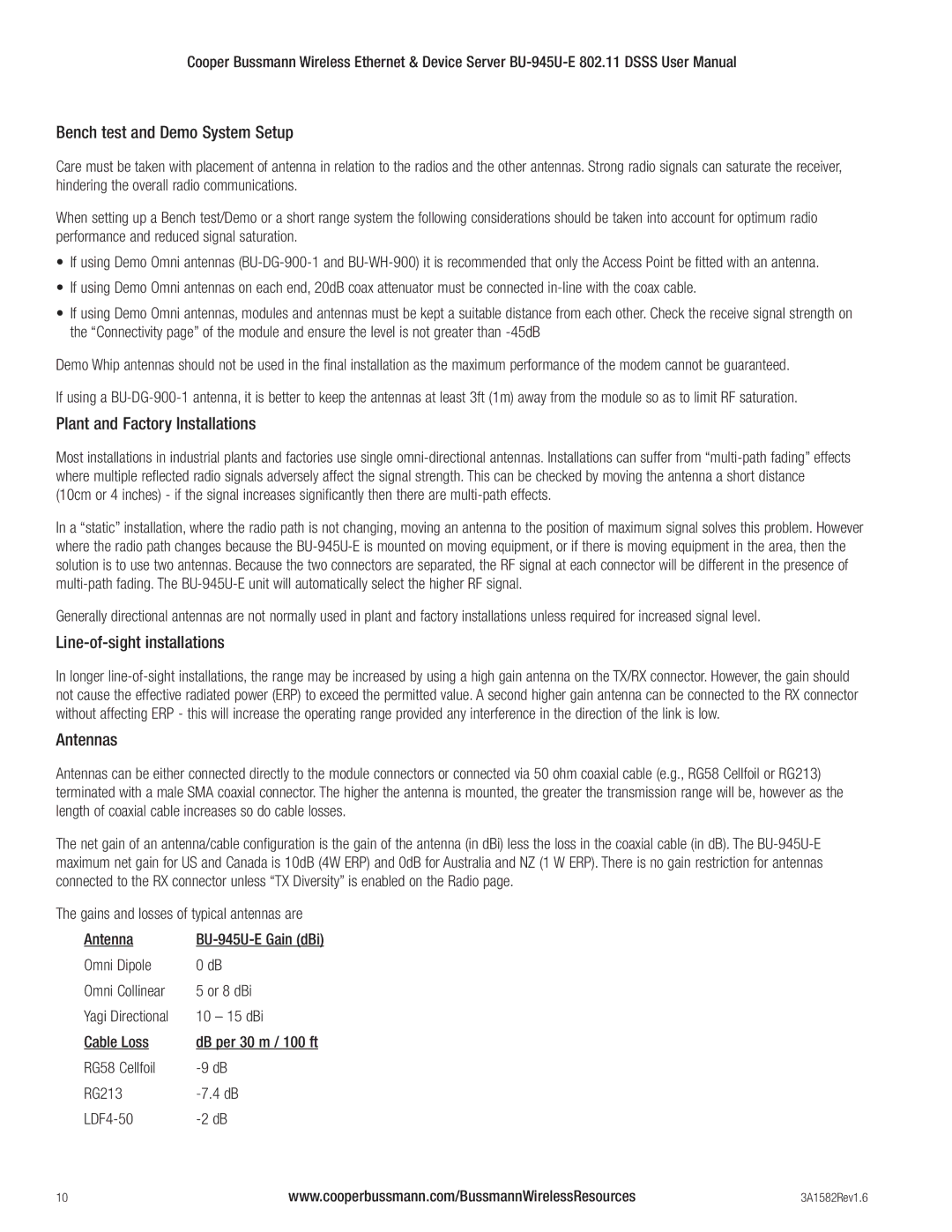Cooper Bussmann Wireless Ethernet & Device Server
Bench test and Demo System Setup
Care must be taken with placement of antenna in relation to the radios and the other antennas. Strong radio signals can saturate the receiver, hindering the overall radio communications.
When setting up a Bench test/Demo or a short range system the following considerations should be taken into account for optimum radio performance and reduced signal saturation.
•If using Demo Omni antennas
•If using Demo Omni antennas on each end, 20dB coax attenuator must be connected
•If using Demo Omni antennas, modules and antennas must be kept a suitable distance from each other. Check the receive signal strength on the “Connectivity page” of the module and ensure the level is not greater than
Demo Whip antennas should not be used in the final installation as the maximum performance of the modem cannot be guaranteed.
If using a
Plant and Factory Installations
Most installations in industrial plants and factories use single
In a “static” installation, where the radio path is not changing, moving an antenna to the position of maximum signal solves this problem. However where the radio path changes because the
Generally directional antennas are not normally used in plant and factory installations unless required for increased signal level.
Line-of-sight installations
In longer
Antennas
Antennas can be either connected directly to the module connectors or connected via 50 ohm coaxial cable (e.g., RG58 Cellfoil or RG213) terminated with a male SMA coaxial connector. The higher the antenna is mounted, the greater the transmission range will be, however as the length of coaxial cable increases so do cable losses.
The net gain of an antenna/cable configuration is the gain of the antenna (in dBi) less the loss in the coaxial cable (in dB). The
The gains and losses of typical antennas are
Antenna | |
Omni Dipole | 0 dB |
Omni Collinear | 5 or 8 dBi |
Yagi Directional | 10 – 15 dBi |
Cable Loss | dB per 30 m / 100 ft |
RG58 Cellfoil | |
RG213 | |
10 | www.cooperbussmann.com/BussmannWirelessResources | 3A1582Rev1.6 |
